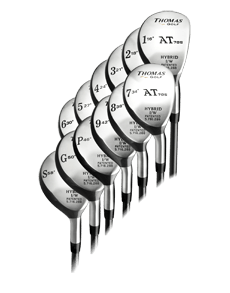
When playing golf on a hot summer day, do you ever take a swing and feel a sticky shirt grab or restrict your shoulders? When it’s cold, do you struggle to get back and through the ball under the bulk of heavy clothing?
Fact is, it’s not enough just to meet the standard golf course dress code (collared shirt, no denim or cutoffs). You need to treat your apparel like an extension of your equipment — it should fit comfortably and never hinder your game, even under adverse weather conditions.
Golf apparel makers have achieved huge advances in recent years, introducing “technical fabrics” that are lightweight, breathable, flexible and able to “wick” (move) moisture away from the body. If you’re still playing in heavy, traditional cotton shirts that soak up and retain sweat, it’s time to get with the program.
When shopping for golf clothing, check the labels for materials such as polyester – yes, it’s come a long way since the 1970s – spandex, nylon and mercerized cotton (also called pearl cotton). Many companies have their own brand names for proprietary fibers, so check the tags for a listing of the item’s features.
In addition to their comfort and performance-enhancing qualities, many technical fabrics offer UV protection from the sun and anti-microbial properties to ward off odor. In general, they’re also more durable than traditional cotton and hold up better after repeated wear and washing. As far as style goes, today’s golf companies are much more fashion-conscious than in the past. Whatever your personal taste, you’re bound to find golf apparel that suits you well.
The lone drawback to high-tech golf apparel is pricing – it can get pretty expensive. Still, plenty of lesser-known manufacturers offer affordable, quality products, so shop around before buying.
dressing for success in proper golf clothing can significantly impact your performance and overall experience on the golf course. Golf is not just a sport; it's also a social and etiquette-driven activity. Wearing appropriate golf clothing not only shows respect for the game and the golf course but also contributes to your comfort, confidence, and focus during your round. Here are some reasons why proper golf clothing matters:
- Comfort: Golf-specific clothing is designed to provide comfort and freedom of movement during the golf swing. Properly fitted shirts, pants, shorts, and skirts allow you to move naturally without any restrictions, ensuring you can execute your shots with ease.
- Performance: Many golf clothing brands incorporate advanced technologies and moisture-wicking fabrics that keep you dry and cool in various weather conditions. These features contribute to your comfort and allow you to perform at your best throughout the round.
- Etiquette and Respect: Golf has a longstanding tradition of etiquette and respect for the game, fellow golfers, and the golf course. Wearing appropriate attire shows that you understand and respect the golf culture.
- Adherence to Dress Code: Most golf courses have dress codes in place to maintain a certain standard of appearance on the course. By following the dress code, you avoid any potential discomfort or embarrassment and ensure a smooth check-in process.
- Sun Protection: Golf clothing often includes UV protection, which helps shield your skin from harmful sun rays during extended periods on the course.
- Versatility: Proper golf clothing is designed to be versatile, allowing you to transition seamlessly from the golf course to other activities without looking out of place.
- Professionalism: If you're playing in a tournament, having a professional appearance can contribute to your confidence and mindset, positively impacting your performance.
- Self-Expression: While adhering to dress codes, golf attire also offers a wide range of styles and colors that allow you to express your personality on the course.
Q&A on Proper Golf Clothing:
- Can I wear jeans for golf? Jeans are generally not considered appropriate golf attire on most golf courses. It's best to opt for golf-specific pants or shorts made from performance fabrics.
- Is a collared shirt required for golf? On most traditional golf courses, a collared shirt is a standard requirement for both men and women. However, some courses may allow mock neck or collarless shirts.
- Can I wear sleeveless shirts for golf? Sleeveless shirts are generally acceptable for men and women on most golf courses, especially during warm weather. However, it's essential to check the specific dress code of the course you plan to play.
- What are the proper golf shoes to wear? Proper golf shoes with soft spikes or spikeless soles are recommended for traction and stability during your swing. Some golf courses may not allow metal spikes.
- Are there specific colors I should avoid for golf clothing? While golf attire allows for various colors and patterns, it's best to avoid overly loud or distracting colors that may be deemed inappropriate on certain golf courses.
Remember that each golf course may have its own dress code, so it's essential to check with the course before your round to ensure you are dressed appropriately. By dressing for success in proper golf clothing, you not only show respect for the game and the course but also enhance your overall golfing experience.





